And helps the LPD save lives
Photography by Jason Stephens
An interview with Lori Martini and Bryce Philpot of the Lakeland Rotary Club
The Lakelander: Please give us a brief history of the Lakeland Rotary Club.
The Lakeland Rotary Club was chartered in 1918. It is composed of community leaders and has always been in the forefront of support for good causes in our community and beyond. It was active in bringing Florida Southern College to Lakeland, as well as the Florida Baptist Children’s Home. Many board chairs for the Lakeland Area Chamber of Commerce havebeen members of this club, and we boast a large contingent of graduates of Leadership Lakeland as well.
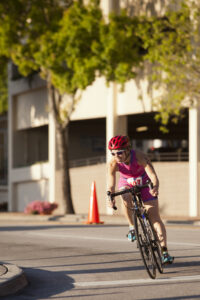 This is our 95th year of service to the community, so we decided to reflect back on the club’s history when selecting our current club project. Back in 1984, a consortium of the Lakeland Rotary Club; Watson Clinic Foundation; five pacemaker manufacturers; and support from both the American College of Cardiology and clubs from Rotary Districts 695, 696, and 6890 came together to form Heartbeat International. The purpose of Heartbeat International was to provide lifesaving pacemakers and leads to totally indigent patients in twenty-one Third World countries. Heartbeat International soon became a district project which led to being a Rotary International project until they became their own 501(c)3, and they are still providing a wonderful service worldwide.
This is our 95th year of service to the community, so we decided to reflect back on the club’s history when selecting our current club project. Back in 1984, a consortium of the Lakeland Rotary Club; Watson Clinic Foundation; five pacemaker manufacturers; and support from both the American College of Cardiology and clubs from Rotary Districts 695, 696, and 6890 came together to form Heartbeat International. The purpose of Heartbeat International was to provide lifesaving pacemakers and leads to totally indigent patients in twenty-one Third World countries. Heartbeat International soon became a district project which led to being a Rotary International project until they became their own 501(c)3, and they are still providing a wonderful service worldwide.
Rotary’s main objective is service — in the community, in the workplace, and around the globe.
This leads into why the AEDs (Automated External Defibrillators) project for Lakeland Police Department patrol vehicles was selected as this year’s club cause.
TL: For those unfamiliar with it, what is Rotary’s mission?
The mission of Rotary International is to provide service to others, promote integrity, and advance world understanding, goodwill, and peace through its fellowship of business, professional, and community leaders.
Rotary’s main objective is service — in the community, in the workplace, and around the globe. The 1.2 million Rotarians who make up more than 34,000 Rotary Clubs in nearly every country in the world share a dedication to the ideal of “service above self.”Rotary clubs are open to people of all cultures and ethnicities and are not affiliated with any political or religious organizations.
TL: How did the Lakeland Rotary Club come to present Child of the Sun?
For years, the Lakeland Rotary Club actively explored ideas to find an annual signature event that would create awareness of Rotary all the while providing a family-fun event with net proceeds going directly back into the community. In 2011, the Lakeland Rotary Club was granted permission to bring back the Child of the Sun Jazz Festival from Florida Southern College, which originally founded the festival in 1988 and sunset it in 2007 due to budget constraints.
From Bill LePere, LPD Communications and Records Manage:
This project will put this wonderful piece of technology in all patrol cars so that we have citywide coverage, which we don’t have now. When a heart stops, AEDs have proven their ability to save a life. This is a great opportunity to benefit citizens and it’s because of the generosity of the Lakeland Rotary Club and the community generally.
As a young patrol officer around 1983, I was dispatched to help a heart-attack victim in downtown Lakeland. I did CPR and waited for rescue to get there, but the person did not survive. When I joined Rotary and heard about this project, I thought, could we have done more had we carried this technology back then? I’m convinced the answer is yes. So it’s not just a conceptual plan — this is something I’ve seen.
TL: Tell us about the Child of the Sun event.
April 6 was the third-annual Child of the Sun. The Lakeland Rotary Club expanded the event this year by adding a Kids Fun Run and a Healthy Pledge Walk to the morning events and expanded the musical genre for the jazz concert. The event linked two Rotary ideals — arts and music — into one great community event.
 The Child of the Sun urban triathlon offered a swim in a fresh-water lake; an urban bike loop that included stretches along three picturesque lakes; and an urban run through downtown Lakeland which featured some of Lakeland’s most scenic views. This is one of the few urban triathlons in Florida and one of the few triathlons that have additional entertainment. Added benefits included a post-race concert featuring the rock band Quittin’ Time, athlete photos, pre- and post-race stretching, post-race massages, and more, all courtesy of the entry fee.
The Child of the Sun urban triathlon offered a swim in a fresh-water lake; an urban bike loop that included stretches along three picturesque lakes; and an urban run through downtown Lakeland which featured some of Lakeland’s most scenic views. This is one of the few urban triathlons in Florida and one of the few triathlons that have additional entertainment. Added benefits included a post-race concert featuring the rock band Quittin’ Time, athlete photos, pre- and post-race stretching, post-race massages, and more, all courtesy of the entry fee.
All net proceeds from the Child of the Sun event will go towards the AED project — essentially everything that is raised minus the actual cost of putting on the event. The Child of the
Sun proceeds are held differently than direct AED donations which are most certainly 100 percent directed to the purchase of AEDs.
The 5k was added in 2012 and allowed additional athletes to enter the event, which amped up the atmosphere even more by providing triathletes’ families and friends the opportunity to participate and celebrate together post-race. In addition to adding proceeds for our AED project, entry for the 5k included a race shirt, individual race photos, pre and post-race stretching, post-race massages, and post-race food and beverages.
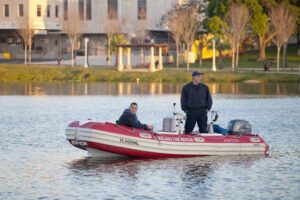 The Kids Fun Run provided a free opportunity for children ages two to twelve to participate in the fun whether it be the Diaper Dash (ages two and under), the Lickity-Split Quick Sprint (ages four to six), or the Long-Leg Lake Loop (ages seven to twelve).Another way that funds were raised for the AED project was with the Heart Healthy Pledge Walk. All ages were welcome, and once pledges were secured, participants walked as many laps as they liked in efforts to create awareness, be healthy, and raise funds for AEDs.
The Kids Fun Run provided a free opportunity for children ages two to twelve to participate in the fun whether it be the Diaper Dash (ages two and under), the Lickity-Split Quick Sprint (ages four to six), or the Long-Leg Lake Loop (ages seven to twelve).Another way that funds were raised for the AED project was with the Heart Healthy Pledge Walk. All ages were welcome, and once pledges were secured, participants walked as many laps as they liked in efforts to create awareness, be healthy, and raise funds for AEDs.
The Jazz Festival was a free community event with a lineup that this year included the Brian Sutherland Trio, the Florida Southern College Jazz Ensemble, Free Time, Jeff Phillips Collective, Belinda Womack, Valerie Gillespie, and Bogus Pomp.
TL: Tell us more about selecting the AED project for this year’s club cause.
One of our club members suffered a collapse a year or so ago, and it was the use of an automated external defibrillator that assisted in saving his life.
Club member Tom Conger relates his personal experience, saying, “On July 15, 2004, my wife of thirty-four years had a heart attack in Daytona Beach, Florida. When the paramedics got to her they were able to shock her heart and get it started, but unfortunately too much time had elapsed and she suffered irreversible neurological damage. On August 3, 2004, she passed away. Imagine what could have happened if effective CPR would have been performed to keep oxygen flowing to her brain and a nearby police patrol car had responded just a few minutes sooner than the ambulance. I believe with all my heart she would have survived. This is why I consider this project so important. We will improve the survival rate from sudden cardiac arrest in this community and spare families from going through what mine did.”
Club member Dr. Alan “Rico” Rich went into sudden cardiac arrest while playing tennis with Mark Hollis at Grasslands a couple of years ago. Two doctors playing on the next court ran over to perform CPR. The Grasslands tennis pro heard the commotion and, without knowing the cause, immediately grabbed the AED unit from the pro shop. The fortuitous combination of medical personnel and the AED unit resulted in Rico’s life being saved. The cause of Rico’s sudden cardiac arrest is one that only two percent survive.
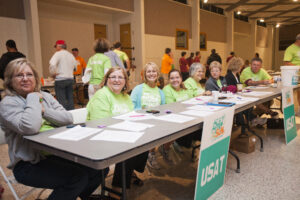 It was about that time that we learned that the Lakeland Police Department did not have these units in their patrol cars. It didn’t take long for the club to agree that we wanted those who are many times our first responders to have the lifesaving devices.
It was about that time that we learned that the Lakeland Police Department did not have these units in their patrol cars. It didn’t take long for the club to agree that we wanted those who are many times our first responders to have the lifesaving devices.
An AED is a portable device used to administer an electricshock to the heart and restore the heart’s normal rhythm during sudden cardiac arrest. Today, the AEDs used in public places and in the home are automated, portable and easy to operate.
[separator type=”thin”]
Facts about the effectiveness of AEDS
It is essential that defibrillators be administered immediately following the cardiac arrest.
• When in cardiac arrest, if the heart is defibrillated within the first minute of collapse, the victim’s chances for survival are close to ninety percent.
• If the heart does not return to a regular rhythm within five to seven minutes, the fibrillation could be fatal.
• For every minute that defibrillation is delayed, survival decreases by seven to ten percent.
• If defibrillation is delayed by more than ten minutes, the chance of survival in adults is less than five percent.
• The use of AEDs by first responders could dramatically improve the survival rate of our citizens.
[separator type=”thin”]
The Lakeland Rotary Club finds these facts captivating and has therefore decided to make an impact by raising funds toward the purchase of AEDs for the Lakeland Police Department patrol cars. The club is part of an AED Consortium, a group of entities including the Watson Clinic Foundation, committed to increasing the number of AEDs in Polk County to make it a safer cardiac community. The AEDs purchased will be compatible with the cardiac monitors used by the Lakeland Fire Department’s fire apparatus and those on ambulances. This will ensure uninterrupted care for the patient.
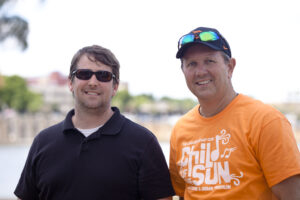 Our club’s focus on community health made the AED project an easy choice for our entire membership. It will make our community a much safer place and empower our first responders to save lives.
Our club’s focus on community health made the AED project an easy choice for our entire membership. It will make our community a much safer place and empower our first responders to save lives.
TL: What is the financial goal? How long will this project last?
This project is intended as a gift to the community. LPD is the conduit in which to make the gift available to the community. Our goal is to purchase AEDs for one hundred LPD patrol vehicles. The average cost per unit is $1,200, making our immediate goal $120,000. Additionally, there are maintenance requirements for each unit when it’s used, and the club would like to create a maintenance fund that would allow for an annual distribution to offset, if not cover, the cost of maintenance on the equipment.
TL: Can people donate directly to the AED project?
We encourage the community to make a direct donation to the Lakeland Rotary Club AED project. We are about to provide the funds to the City of Lakeland so that they in turn can make the purchase. Although donations are still encouraged and welcomed, by the time this article is published, the donations will be used exclusively for a maintenance fund established to ensure the continuation of the devices.
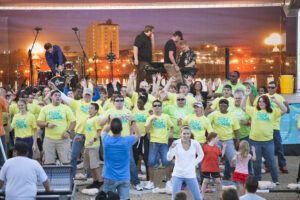 A donation to this project is tax deductible and is being made via the Lakeland Rotary Club fund within the Community Foundation of Greater Lakeland. Donations can be made online at www.cotslakeland.com/aeddonation. In addition, checks can be made payable to The Lakeland Rotary Fund w/CFGL. Please add “AED donation” in the memo area and mail your donation to The Lakeland Rotary Club, P.O. Box 2171, Lakeland FL, 33806.
A donation to this project is tax deductible and is being made via the Lakeland Rotary Club fund within the Community Foundation of Greater Lakeland. Donations can be made online at www.cotslakeland.com/aeddonation. In addition, checks can be made payable to The Lakeland Rotary Fund w/CFGL. Please add “AED donation” in the memo area and mail your donation to The Lakeland Rotary Club, P.O. Box 2171, Lakeland FL, 33806.
TL: How can people get involved with the Lakeland Rotary Club?
To learn more about the Lakeland Rotary Club, the group offers two websites (lakelandrotary.org and cotslakeland.org) and four Facebook pages (the Lakeland Rotary Club, Child of the Sun Jazz Festival, Child of the Sun Urban Triathlon, and Child of the Sun 5k). We are a membership organization with more than 175 members who are actively involved in the community and who continue to seek ways to provide “service above self.”

